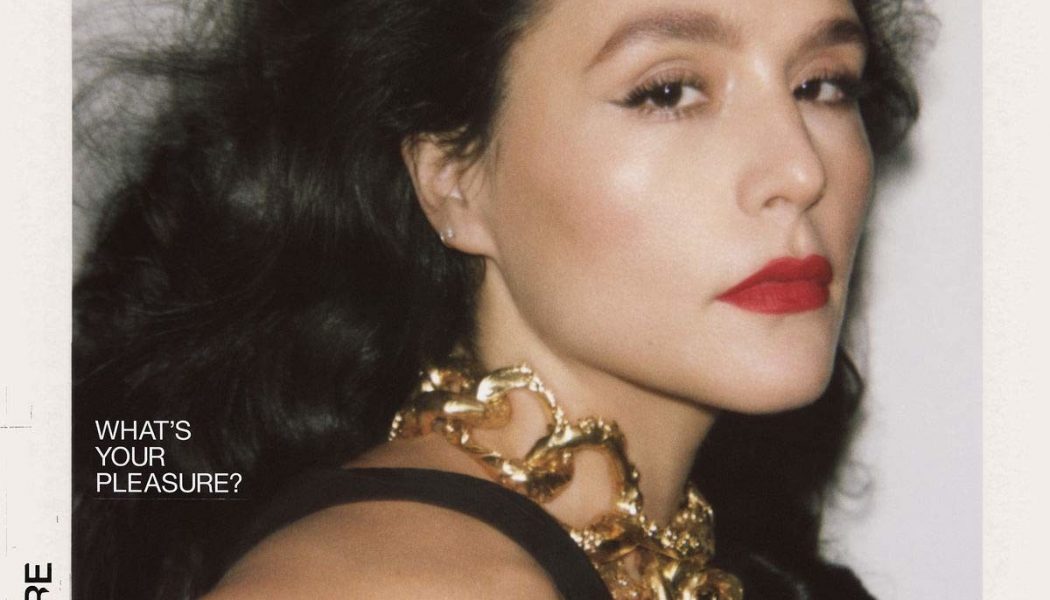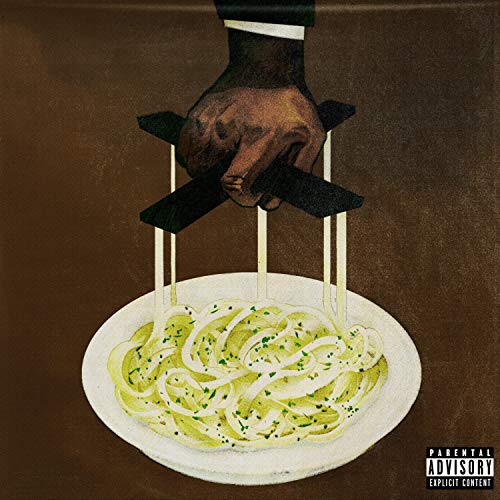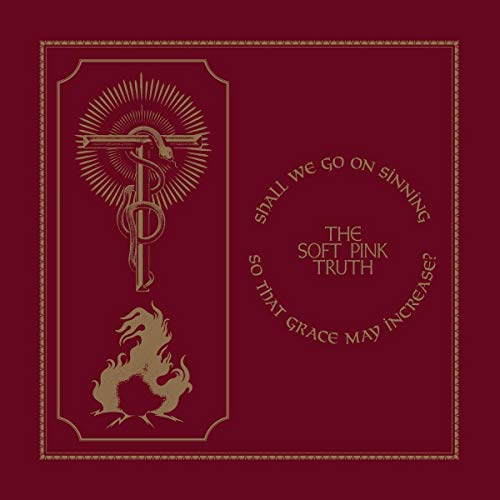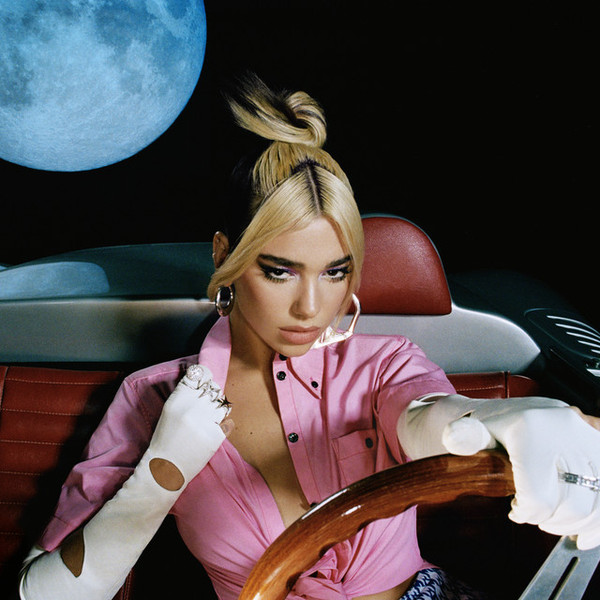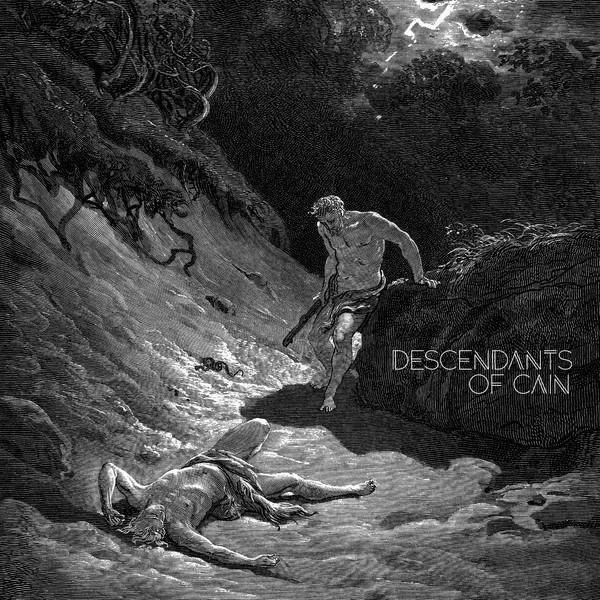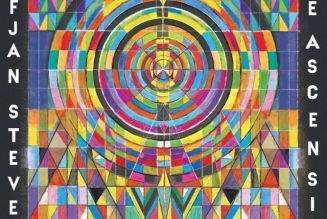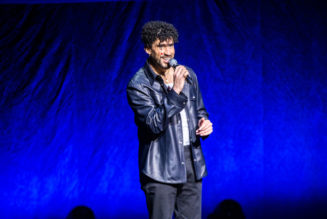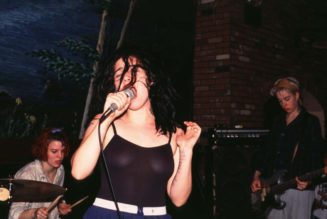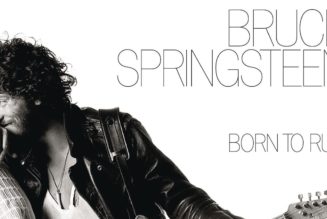After a deluge of canceled or delayed tours, drive-in experiments, Bandcamp Fridays and bedroom livestreams, we’re finally here.
Yay?
It’s hard to celebrate much of anything in 2020. But one encouraging sign from the music industry has been the number of artists innovating on the fly — figuring out ways to sustain their careers through the madness. And as fans, at least we’ve had new albums to help us process our continuing semi-apocalypse.
Having (mercifully) reached the end of this awful year, we have even more perspective on the functionality of a great record. The 30 we’ve assembled here have prompted us to dance, helped us grieve, made us laugh, or even just allowed us to escape into a transportive riff or soundscape. We assume they did the same for the artists themselves.
Let us remember to help us forget.
30. Jessie Ware – What’s Your Pleasure?
This year was an exercise in being dressed up with nowhere to go, but Jessie Ware edged us toward the dance floor anyway with her mirrorball-blessed fourth album, What’s Your Pleasure? Having started her career in dance music, Ware swapping power ballads for beats isn’t a totally unexpected side-step. But the ‘70s throwback suits her “queen of the club” style, with Italo disco, Nile Rodgers-y bass lines and grand Minnie Riperton-styled sweeps all used in the name of a shimmying good time. Ware might be telling us to save a kiss — but in return, she managed to save the whole summer. – Laura Studarus
29. My Dying Bride – The Ghost of Orion
Grief springs eternal for My Dying Bride — and it’s never been more personal than on The Ghost of Orion, which revolves around the cancer diagnosis of vocalist Aaron Stainthorpe’s daughter. Near-loss becomes as harrowing as outright loss: “Tired of Tears” (which most directly addresses his daughter’s struggle) is Stainthorpe growing weary of gloom and mourning, despite it being his very group’s life force. Still, nothing on Orion sounds like giving up. “The Old Earth” both accepts unrelenting misery and yearns for a cataclysmic reckoning in which Andrew Craighan’s trademark drawn-out melodies and crushing death-doom dirges become antonyms for dissociation. – Andy O’Connor
28. Margo Price – That’s How Rumors Get Started
Since her first album, 2016’s Midwest Farmer’s Daughter, Margo Price has often been positioned in outlaw country, flanked by comparisons to Bobbie Gentry and Loretta Lynn. But on her third LP, That’s How Rumors Get Started, Price veers closer to classic rock and away from the honky-tonk that once echoed through the Nashville songwriter’s music. While her debut was charged with drinking tropes and her sophomore effort (2017’s All American Made) steeped in political consciousness, Rumors focuses on the more vulnerable stories of touring life: being away from home, surviving relationships and the anxiety of stillness. Price is at her most stunning on the gospel-tinged confessional “Prisoner of the Highway,” in which she reflects on the cost of being an artist on the road while in love and starting a family. The same goes for power ballad “I’d Die For You,” where she parallels a soaring Stevie Nicks. A little bit of Nashville and Southern rock seems to have been good for her soul. – Ilana Kaplan
27. Soccer Mommy – color theory
color theory feels like a pre-pandemic fever dream. It’s peaceful, unhurried, and concerned only with internal turmoil. On the fluttering “bloodstream,” Sophie Allison grapples with an inexplicable inability to remain happy. “royal screw up” shines a light on her own insecurities, while also making revelations. “’Cause you are a question that I thought I could solve,” she sings. “But you don’t need solving — you’re just not what I want.” Allison showed a rare level of vulnerability and reflection on her 2018 debut, Clean, but color theory goes even deeper. – Danielle Chelosky
26. Nothing – The Great Dismal
The Philadelphia shoegaze quartet followed their quietly acclaimed 2018 LP, Dance on the Blacktop, with the colossal The Great Dismal — bringing in new members, conjuring My Bloody Valentine, delving deeper into their gritty and eccentric sides, and exploring what it means to be human. The guitars on “April Ha Ha” are abrasive and hypnotic, hurtling the listener into darkness. Most of the lyrics are unintelligible, except for when Domenic Palermo defeatedly sings, “Isn’t it strange / Watching people / Try and outrun rain?” – D.C.
25. The Lemon Twigs – Songs For The General Public
Long Island siblings Brian and Michael D’Addario were born in the late ‘90s but have mastered the ornate, melodic sound of ‘70s rock so well that they’ve earned the approval of Todd Rundgren and Elton John. On their third album for 4AD, the brothers drop their concept album ambitions to earnestly ponder human relationships on songs like “Why Do Lovers Own Each Other?” and “No One Holds You (Closer Than The One You Haven’t Met).” There’s always a playful spirit to the performances, particularly when Michael’s voice suddenly flips from Iggy Pop swagger to a Bob Dylan wheeze in the middle of a verse. – Al Shipley
Ascendant Houston psych-funk trio Khruangbin finally spoke up on Mordechai, their most lyrically-driven LP yet. Like many of the band’s buzzy, globetrotting grooves, some new lines may come off as opaque — with bassist Laura Lee using multiple languages (including Turkish, Japanese and Portuguese) on the disco winner “Time (You and I)” or abstract spoken verses and a French-language chorus on the seductive “Connaissais de Face.” Other messages are simpler, as “You’re not crazy” is repeated no less than 14 times on the melty “If There Is No Question.” The spacious album, recorded in a barn in the band’s native city, draws from their celebrated melting pot of influences — like “Spanish disco” and “Israeli, Yemenite jams” — as much as indie-rock and soul. – Bobby Olivier
Few artists could convincingly cover Korn and Carly Rae Jepsen in the same set, and next to zero can conjure both of those acts within a single song. Then again, that’s just one reason why Poppy may very well be a computer. Her gloriously disorienting third LP takes this dichotomy to an extreme, breezing through disparate sounds with the ease of scrolling a news feed. “Concrete” moves from Pet Sounds harmonies to cutesy teen pop choruses to djent-y guitars, while on “I Disagree,” she adopts a clipped trap triplet flow before a chorus that nods to vintage Evanescence. “Burn it to the ground,” she sings. “We’ll be safe and sound / When it all burns down.” Let’s assume she’s talking about the concept of genre. – Ryan Reed
22. Beabadoobee – Fake It Flowers
Beabadoobee emerged in 2017 with her first single, “Coffee” (which later went viral on TikTok early this year), but a better intro to her music was 2019’s “I Wish I Was Stephen Malkmus,” an ode to the influence of Pavement. The songwriter’s debut LP, Fake It Flowers, takes on ’90s nostalgia, offering hints of Lush, Elliott Smith, Veruca Salt, Sonic Youth and…Pavement. But Bea Kristi still makes the record feel innately hers, penning deeply personal lyrics about mental health struggles, difficult past relationships and finding love with her longtime boyfriend. – Tatiana Tenreyro
21. The Flaming Lips – American Head
The Flaming Lips love grand concepts. This time, Wayne Coyne and company explored something a little more conventional than their past mystical journeys: Tom Petty and Mudcrutch’s stop in Tulsa in the 1970s. Coyne tried to answer the what-ifs surrounding that visit, delving deep into imagined characters and druggy nostalgia. The imaginative innocence of “Dinosaur on the Mountain” melds with the acid trip dreaminess of “Flowers of Neptune 6” and the Beatles-esque psych ballad “Mother Please Don’t Be Sad,” fitting together like the kind of Lips puzzle only they can assemble. – Daniel Kohn
20. Future Islands – As Long as You Are
No one’s ever accused Samuel T. Herring of being unfeeling, and the Future Islands frontman lets his emotions fly on the band’s sixth LP. He blends his bleeding-heart baritone with delicate synth washes and New Order-worthy bass lines, compelling us with sheer charisma to consider the weight of each word as he delves into heady topics like body dysmorphia, romantic refuse and self-worth. “Do you hate yourself? / Break yourself? / Mistake yourself for the things that they say?” he asks frantically on “Waking.” Without any easy answers, we’re left with the frenetic thrill of feeling it all. – L.S.
19. Thundercat – It Is What It Is
L.A.’s bassist extraordinaire has done it all — hardcore, yacht rock, jazz, soul, you name it. With It Is What It is, he exceeded his lofty standards and made his best album yet. Following the 2018 death of his close friend Mac Miller, Stephen Bruner channeled grief into his music. But the record is also reliably playful. It’s as much fun hearing him sing about the powers of headgear on “Dragonball Durag” as it is watching him try to charm the pants off folks in the video. He shows his brilliance on “How Sway” and once again proves his funkiness on the star-studded “Black Qualls.” As usual, Bruner demonstrates why he’s one of our generation’s most versatile musicians — fearless and unafraid to take a groove to a different time and place. – D.K.
18. 21 Savage & Metro Boomin – Savage Mode II
Blockbuster movie sequels typically raise the stakes to go bigger than the original, and 21 Savage & Metro Boomin’s Savage Mode II adheres to the unwritten sequel rule. Pen & Pixel album art and a robust merch line accompanied the album narrated by Morgan Freeman (who, among other things, defines “savage”). Metro Boomin’s production is grander and more diverse while still retaining his ominous thump. 21 Savage matches Boomin by subtly experimenting with his own delivery — making his menacing, mid-pitched drawl looser and occasionally more melodic. Unlike sequels that double down on the original’s tropes, Savage Mode II expands its scope. Dead bodies are largely swapped out for more bands and women, as homicides are in the rearview. Now a “full-time rapper” (“Glock in My Lap”), 21 balances the felonious with the luxurious. Savage Mode II is the aural equivalent of watching black Air Forces step out of a Wraith. The ad-libs remain the same, but 21 is a different savage. – Max Bell
17. Sufjan Stevens – The Ascension
“Don’t do to me what you did to America,” Sufjan Stevens croons on the 12-minute epic “America.” And the broader mood of his eighth solo LP, The Ascension, is just as overcast — full of poetic despair set against the experimental, electronic beats and wispy melodies that have defined much of Stevens’ music. That balance of beauty and bleakness also anchors another centerpiece, the crunchy “Death Star” where Stevens unnervingly chants “Death star into space / What you call the human race / Expedite the judgment day.” Earlier in 2020, Stevens also collaborated with his stepfather Lowell Brams for the New Age album Aporia. If the Oscar nominee has demonstrated anything in the last 20 years, it’s range. – Stephanie Mendez
16. Freddie Gibbs & Alchemist – Alfredo
Freddie Gibbs and Alchemist approach their art like athletes, forever strengthening muscle and refining their respective forms. The mafia-themed Alfredo isn’t a radical departure from anything either has done before. But the Grammy-nominated album is the greatest distillation to date of these two singular talents, with their collaboration enhancing one another’s strengths. After a decade-plus in the game, Gibbs still finds inventive ways to frame moving weight and riding on his enemies. Alchemist supplies sparse, loop-driven suites that are alternately grimy and regal, the ominous score to the dope deals or the relaxed, elegant soundtrack to the champagne-stocked yacht cruises those transactions afforded. Gibbs floats over every Alchemist beat, his versatility unrivaled as he jumps from double to triple time flows, from brute force to melodic finesse. The ingredients of Alfredo are familiar, but they’ve never been as potent or well-matched. – M.B.
15. The Soft Pink Truth – Shall We Go On Sinning So That Grace May Increase?
The gushing minimalism of Steve Reich, the dreamy jazz-fusion of ’70s ECM artists, the ambient-adjacent pulse of the Field’s From Here We Go Sublime — these seem like possible ingredients melted down and absorbed into the masterful new work from the Soft Pink Truth, a.k.a. Drew Daniel, best known as half of the electronic duo Matmos. The album emerged out of Daniel’s anger with the Trump presidency and his desire to avoid creating “‘angry white guy’ music in a purely reactive mode.” What he created instead is a luxuriant deep house odyssey, percolating and humming with drones, bells, murmuring voices, twinkling piano and even some live saxophone. The beautiful album brought endless moments of quiet bliss during this relentlessly chaotic year. It’s best listened to on vinyl or iTunes, as the album is presented as one continuous piece of music, so ads or artificial track breaks can kill the vibe. – Zach Schonfeld
14. Dua Lipa – Future Nostalgia
“Disco revival” is hardly a novel concept in pop music, but it takes a certain kind of star to make it feel fresh again. Enter Dua Lipa, who (much like Madonna and Kylie Minogue) flipped the genre on its head with her sophomore album, Future Nostalgia. Calling on heavyweights like industry favorite Jeff Bhasker and mega-producer Stuart Price, Lipa found escapism through dance-friendly jams. “Levitating” is a bubblegum-sweet joyride; “Physical” resurrects Olivia Newton-John’s ‘80s jazzercise; and “Don’t Start Now” is retro-pop at its finest. “Maybe music is kind of what we need,” Lipa said on Miley Cyrus’ Bright Minded Instagram Live series back in March. “And it’s good to just get people to dance and have fun.” – Bianca Gracie
Brooklyn firefighter/rapper Ka dispenses grizzled advice like a clever veteran who never needs to raise his voice to earn attention. On Descendants of Cain, his storytelling remains gruff and rich with detail, his matter-of-fact lyricism full of unflinching wisdom (“Never marinate on beef you don’t plan on finishing,” he growls on “Patron Saints”) and his grainy production more complex than ever. Plus, it’s likely the only 2020 rap album that builds a haunting loop around a sample from the ’70s Swedish prog-rock band Zamla Mammaz Manna. Though he was a member of the New York hip-hop group Natural Elements in the ’90s, Ka found solo success relatively late in life. At 48, he’s never sounded less interested in chasing rap trends or compromising his vision, and Descendants of Cain is all the better for it. – Z.S.
12. Deftones – Ohms
“I finally achieve balance,” Chino Moreno half-sings/half-screams on “Genesis,” a pummeling highlight from Deftones’ ninth album. In essence, it’s been the band’s ultimate challenge for decades: seamlessly melding their arty atmospherics and eight-string metal intensity. They’ve been on a creative hot streak coming off of 2012’s Koi No Yokan and 2016’s Gore, but neither of those LPs achieve the holistic balance of Ohms. With more space for Frank Delgado’s shadowy synths and Sergio Vega’s melodic bass, the band’s dynamic shifts have never been more satisfying — like on “Pompeji,” where clean guitars and crooning give way to a flood of distortion. – R.R.
11. Hayley Williams – Petals for Armor
Paramore’s Hayley Williams has been inching toward a solo career for nearly a decade. Her debut, Petals for Armor — produced and largely co-written by her longtime Paramore bandmate Taylor York — is a fairly stark departure from her band’s radio-friendly rock and emo roots, boasting dance-friendly synth lines, strings and electronics behind Williams’ more controlled voice. Those expecting another Paramore album were thrown for a loop — Petals for Armor isn’t Riot! (or even After Laughter) all over again. But this complex art-pop style, exemplified by lead single “Simmer,” is an intriguing step in a new direction. – Josh Chesler
As a pandemic-riddled summer ushered in an even longer pandemic-riddled autumn, at least we had the bucolic sounds of Fleet Foxes to provide some comfort. Robin Pecknold surprise-released the sweeping Shore as the seasons turned, with his music at its most assured and his lyrics touching a newfound optimism. Recorded on both sides of the pandemic, the group’s layered fourth record offers the warmth of a tweed sweater — best exemplified by “Can I Believe You,” the delicate “Young Man’s Game” and the bittersweet tribute to Richard Swift, David Berman and others on “Sunblind.” In a year that’s felt like a long winter, Shore has brought a meditative sense of acceptance. – D.K.
If there was ever a year to wade into an Alabama creek, stare at the sun and figure out how the hell you’re going to keep on keepin’ on, it was 2020. Just be sure to leave Waxahatchee’s Saint Cloud playing from the bank. Katie Crutchfield, now 10 years removed from her place in indie-punk cult favorite P.S. Eliot, has developed her solo persona into a captivating and deeply emotive sad-song dynamo. The singer lands more sure-footed than ever with her fifth solo album. A jangly and pensive journey down old southern roads, it finds the recently-sober Crutchfield considering past mistakes and paths toward healing. More laid back than its predecessor (the more rock-focused Out in the Storm) Crutchfield’s best album yet reminds us to accept imperfection and find the joy in our search for whatever comes next. – B.O.
8. Tame Impala – The Slow Rush
Following 2015’s Currents, Tame Impala’s Kevin Parker became an in-demand artist throughout the industry — countless festival gigs, teaming with Lady Gaga and Travis Scott, lending Rihanna an album cut. Five years later, naming his follow-up The Slow Rush couldn’t be anything but a cheeky wink. Released on Valentine’s Day, the album builds upon the artist’s knack for perfectly fusing prog-rock and psychedelic pop. The gauzy synths of “Borderline” attempt to hide loneliness, and “Breathe Deeper” is a funkified sigh of relief. Reflective closer “One More Hour” perfectly caps the album, drifting listeners through various stages of Parker’s journey of time and love. Let’s just hope he doesn’t leave us waiting another five years for the next chapter. – B.G.
If 2020 had a wry best friend, it’s Phoebe Bridgers, whose second album tackles nothing less than the idea of life after death, hero worship and resting bitch face — only to reveal on the horn-accented single “Kyoto” that, yes, she’s also a liar. Although hyper-specific to its creator (see: lyrics about hopping the fence at the Huntington Gardens, eating saltines on the floor, and hating on Eric Clapton), Punisher also doubles as the folk-fueled battle cry of a generation still trying to find meaning in the mess. If that means facing the apocalypse, as Bridgers does over the cacophonous apex of closing track “I Know the End,” rest assured that there’s no artist better suited to burn it down and start again. – L.S.
After securing his place in reggaetón, Bad Bunny shifted the goalpost to a more global outlook with his second solo album, YHLQMDLG (which stands for “Yo Hago Lo Que Me Da La Gana” and translates as “I Do Whatever I Want”). The record has made history commercially as the first all-Spanish-language album to reach No. 2 on the Billboard 200, but it’s also a creative leap for reggaetón itself. Bad Bunny turns bossa-nova classic “The Girl From Ipanema” into ‘90s Nintendo trap; blasts eardrums with the rock ending of “Hablamos Mañana;” gets dirty with Jowell & Randy and Ñengo Flow on sonic mash-up “Safaera;” and dresses up in drag for women’s autonomy in the “Yo Perreo Sola” video. Bunny has surely lived up to the album title, particularly since he’s already released two more albums since YHLQMDLG. This is El Conejo Malo’s world domination — and now we’ve had front-row seats. – B.G.
Our Love was Caribou’s most commercially successful album to date, even landing a Grammy nomination. But instead of hurrying to follow it up, Dan Snaith spent years reveling in his dance-y alter ego, Daphni and being a parent to his two young daughters. With Suddenly, the Canadian composer/DJ finally emerged with what may be the warmest, most empathetic electronic album of 2020. Snaith flirts with old-school hip-hop breakbeats on “Home” and dusty jazz loops on “Lime” (digging up some wonderfully rare soul samples along the way), but he never strays too far from the soulful, house-inspired pop songcraft he’s mastered on these past two albums. – Z.S.
4. Perfume Genius – Set My Heart on Fire Immediately
On the early lo-fi Perfume Genius recordings, you can hear the grand ambition of Mike Hadreas yearning to break through the scratchy fidelity. It’s been a gradual evolution with each successive project inching him closer to the kaleidoscopic sprawl of Set My Heart on Fire Immediately, his fifth and most expansive LP. Aided by producer Blake Mills and a crew of A-list session pros (including bassist Pino Palladino and drummer Jim Keltner), he commands every one of the numerous styles he attempts. “Describe” is fuzzy dream-pop country, while “On the Floor” is funk-washed grind, complete with organ notes straight out of the Maytals. – R.R.
In late May, the U.S. faced a social and cultural reckoning that had been building for years. Many songs were played at the protests, but none summed up that time (and 2020 as a whole) quite like RTJ4. The album’s fiery message, bombastic beats and sharp humor offered both a musical reprieve and the soundtrack for a moment that needed one. “Ooh La La” and its accompanying video showcased Killer Mike and El-P’s fun side, whereas “JU$T” battled injustice. Who else has the strength to enlist Josh Homme and Mavis Staples on the same album, much less the same song (“Pulling the Pin”)? That could also be said for dusting off previous collaborator and notorious recluse Zack de la Rocha. When the world needed something, anything, Run the Jewels came through with their blazing fourth album. It was more than worth the four-year wait, offering a reason to believe in a year where there weren’t many options. – D.K.
2. Bartees Strange – Live Forever
Bartees Strange finally broke through, earning universal acclaim in a terrible year where artists struggled more than ever. But the response to Live Forever was well-earned, following years of grinding and sonic experimentation. The album opens with the atmospheric “Jealousy,” introducing the emotional world these songs inhabit. From there, it plays with catchy hip-hop on “Boomer,” brassy indie-rock on “In a Cab” and intimate folk on “Far” — all proving that Bartees is one of our most versatile emerging artists. – D.C.
1. Fiona Apple – Fetch the Bolt Cutters
The anxiety of anticipation for Fiona Apple’s new album was relieved within its first three minutes and 58 seconds. Fetch the Bolt Cutters arrived eight years after its predecessor, The Idler Wheel…, but opener “I Want You To Love Me” maintained her signature idiosyncrasies, vulnerability and wit — all qualities that bloom further as the record continues. Every moment is memorable, from the fun piano and hopeful lyricism on “Shameika” to the playful vocals and clever wordplay on “Rack of His.” Though the album easily could’ve gotten lost amid pandemic madness, fans clung to it throughout quarantine. Nothing could’ve swept this monumental release under the rug. Apple’s lighthearted yet confrontational songs made a terrible year a little easier to process. – D.C.
